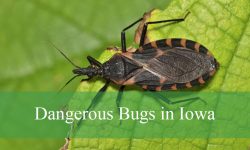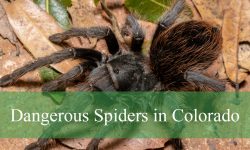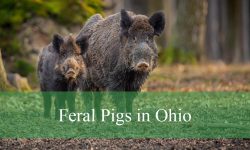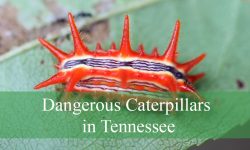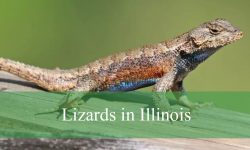Many people find caterpillars fascinating, and some species are particularly adorable. Cute caterpillar species come in various shapes, sizes, and colors, often sporting fuzzy bodies or unique patterns that make them endearing to observers.
The woolly bear caterpillar, with its brown and black bands, is a popular example that many consider charming. Another cute species is the puss moth caterpillar, which resembles a tiny, fluffy kitten. The rosy maple moth caterpillar, with its vibrant pink and yellow hues, looks like a living piece of candy.
These endearing creatures not only captivate nature enthusiasts but also play crucial roles in ecosystems as they transform into beautiful moths and butterflies.
Different Types of Cute Caterpillars
Common Archduke Caterpillar
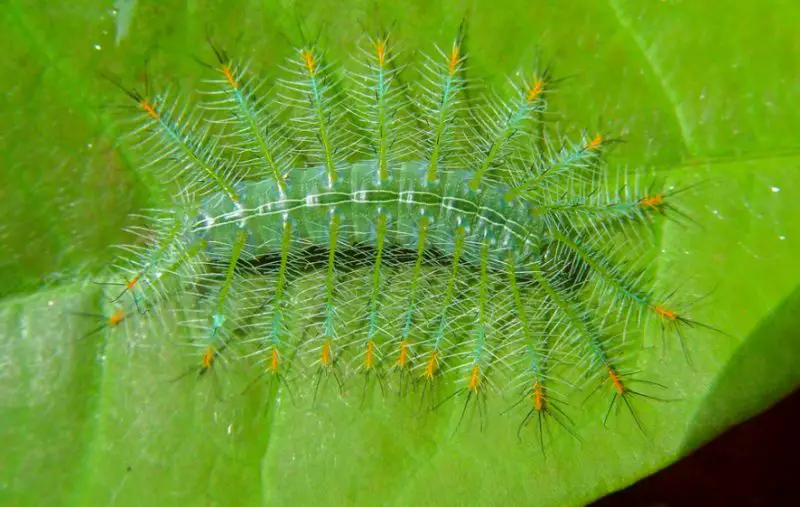
The Common Archduke Caterpillar (Lexias pardalis), rare in India, features unique feeding habits and appearance. It sports a dark green body with lighter green tubercles and hairs tipped in orange. This fuzzy caterpillar undergoes green color variations through molting stages.
It’s often found feeding on saptrees during the summer months, showcasing its specific habitat preferences.
Blue Nawab Caterpillar

The Blue Nawab Caterpillar (Polyura schreiber) thrives in warm, humid tropical and subtropical regions worldwide. Known for its dragon-like appearance with four backward-bent horns on a large head, it sports a pale green body.
The head is brown, and the horns vary in color between brown and black, adding to its mythical resemblance to dragons.
Moth Butterfly Caterpillar

The Moth Butterfly Caterpillar (Liphyra brassolis) stands out for its slug-like appearance, complete with a flattened rear end resembling slugs. It has orange-to-brown coloring on top and white underneath. This mimicry helps protect it from predators that avoid foul-tasting caterpillars.
As an adult moth, it further mimics a dead leaf, showcasing its remarkable camouflage adaptations.
Laugher Moth Caterpillar
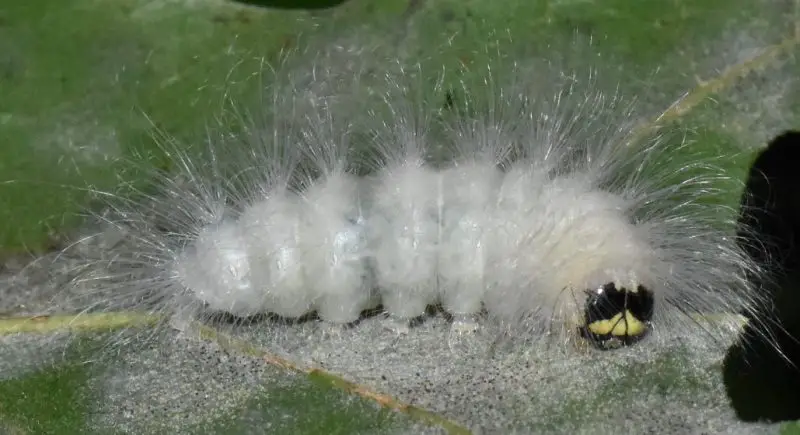
The Laugher Moth Caterpillar (Charadra deridens), native to Eastern US states, boasts a striking pure white coloration. After its final molt, its ventral side may turn cream or cream-yellow. It features long, upward-facing white hairs on its dorsum, potentially irritating to predators.
While harmless to humans, contact with these caterpillars can cause mild rash-like symptoms.
Lobster Moth Caterpillar
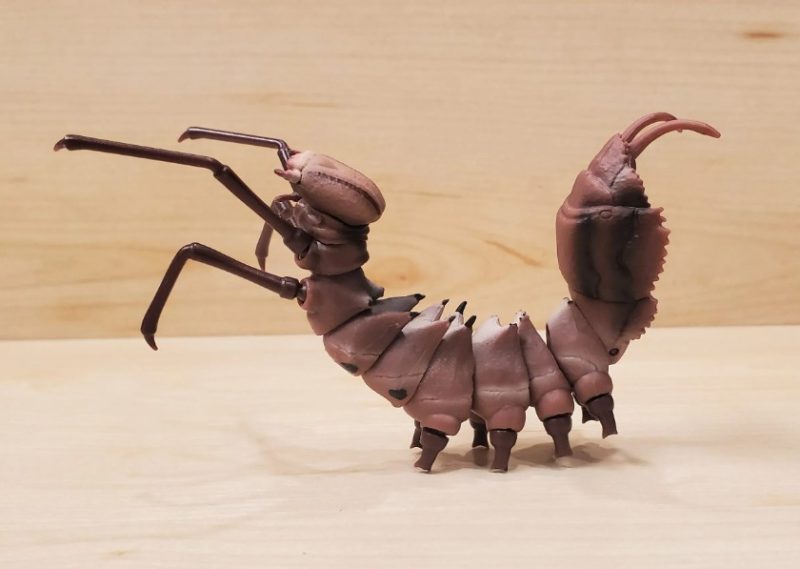
The Lobster Moth Caterpillar (Stauropus fagi) stands out with its irregular shape and unique coloring. It’s known for its presence in large numbers on hosts, capable of defoliating them. Sporting light brown-red or salmon coloring with red or red-brown prolegs, it features white diagonal bands on its sides.
Resembling a dead leaf, it employs camouflage against predators, requiring management techniques to protect its host trees like acer and chestnut.
Anaxidia lozogramma Caterpillar
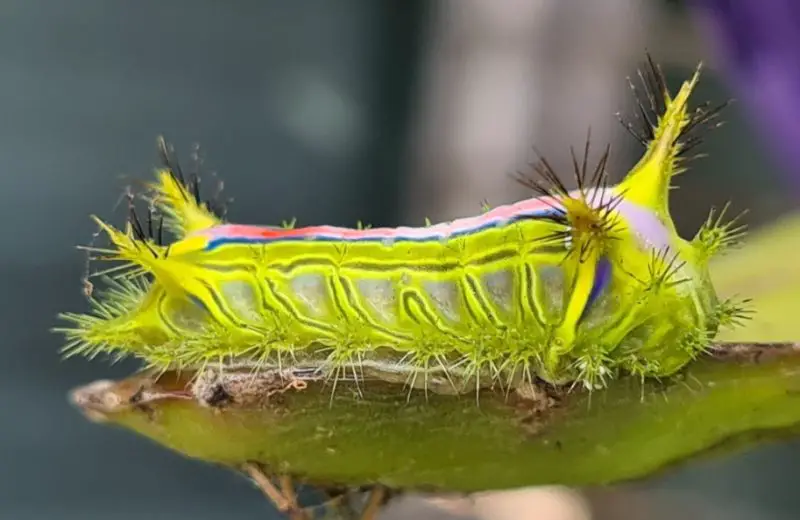
The Anaxidia lozogramma Caterpillar, found throughout Australia, boasts a brightly colored body with a neon-like green or yellow-green hue. It’s distinguished by a spiny appearance, sporting long green horns on each side. Its mid-dorsal section is predominantly white with partial red, bordered by blue and yellow accents near the head and rear.
The species’ eggs are also notable for their hairy appearance, adding to their unique characteristics.
Monkey Slug
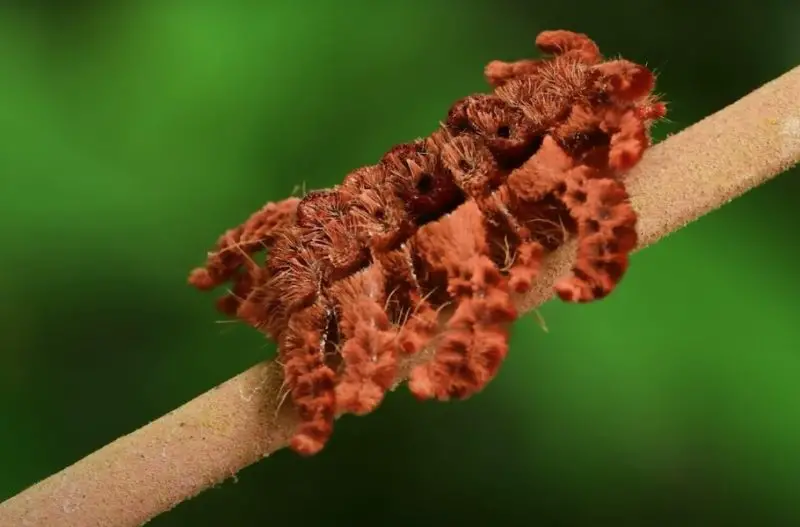
Monkey Slug Caterpillars (Phobetron pithecium) are among the world’s most unusual and distinctive. With a slender body adorned with equally sized and curled projections, it’s often mistaken for a spider or molted skin. The underside is predominantly yellow, while the projections, resembling legs, are non-functional for movement.
This caterpillar’s unique appearance sets it apart with its spider-like guise and curious characteristics.
Planthopper Parasite Moth Caterpillar
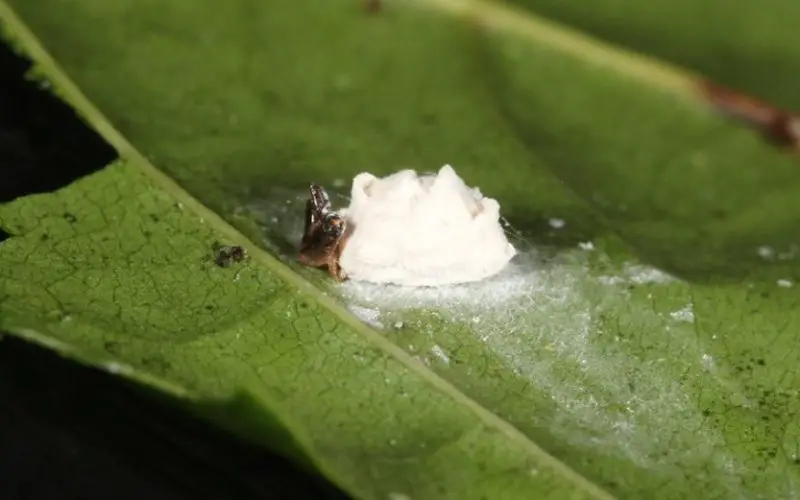
The Planthopper Parasite Moth Caterpillar (Fulgoraecia exigua) is distinguished by its waxy-fuzzy appearance and light green coloring. As it progresses through instars, a white waxy texture envelops its body, leaving only its green head exposed. This camouflage mimics its prey, planthoppers, making it adept at hunting small insects, a rare trait among caterpillars.
Cabbage Tree Emperor Caterpillar

The Cabbage Tree Emperor Caterpillar (Bunaea alcinoe), native to Africa, stands out as one of the world’s rare black caterpillars. It emerges from a white egg and develops black horns and tubercles. Four long black horns adorn its head, while two rows of shorter white horns run along its dorsum. Wide red spots further decorate its mid-back, enhancing its striking appearance.
White Commodore Caterpillar

The White Commodore Caterpillar (Parasarpa dudu) is known for its spiny appearance adorned with red, white, and yellow hues. Its irregular yellow body is often obscured by numerous red spines resembling small globular shapes, each tipped in black and white.
Employing plant flower mimicry, it evades predators, aided by wasps that deter other predatory insects.
Painted Cup Moth Caterpillar
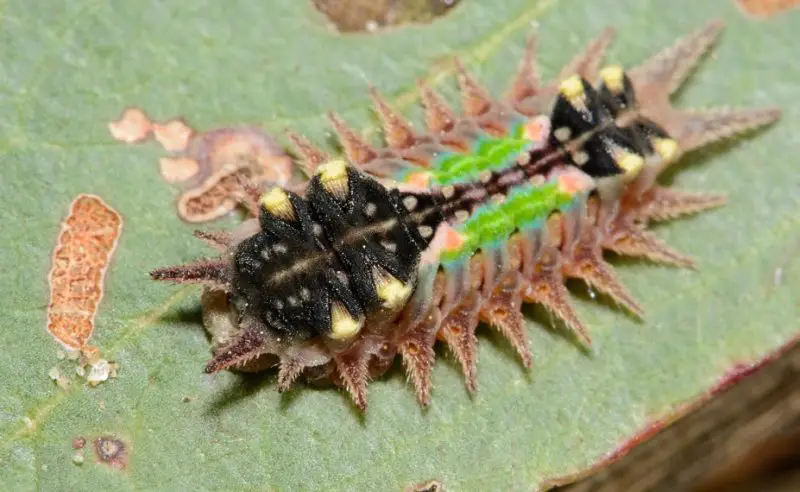
The Painted Cup Moth Caterpillar (Doratifera oxleyi), found in tropical and subtropical climates, thrives on eucalyptus plants. It features white to transparent sides with lateral-pointing tubercles. Its dorsal area displays vibrant colors, including yellow, green, and red, with prominent red frontal spines resembling horns.
During its final instar, it undergoes a dramatic transformation, adopting green and yellow hues adorned with yellow and black spots, departing from its earlier translucent appearance.
Epistrophus White Morpho Caterpillar
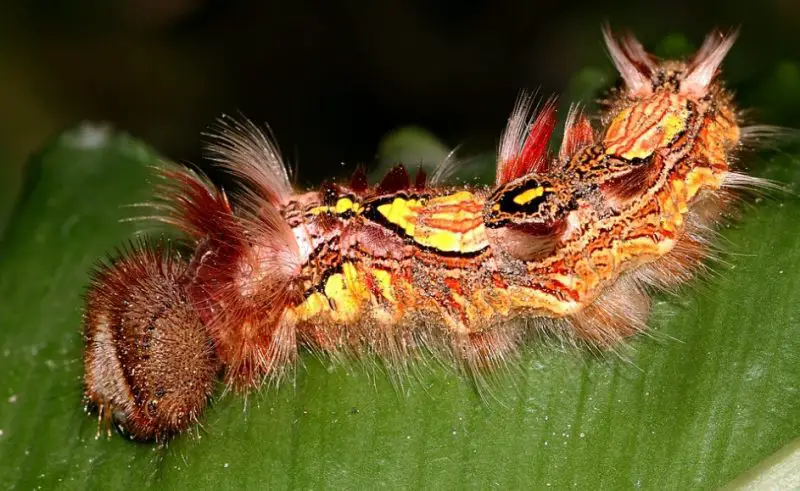
The Epistrophus White Morpho Caterpillar (Morpho epistrophus) is characterized by its hairy red body, a striking feature in the caterpillar world. Vivid red hairs cover its body, including the ventral side, revealing a black body with a thin yellow mid-dorsal stripe and yellow spots.
White hairs adorn its rear end, contributing to its unique appearance. Its colorful display serves as a warning to predators, signaling potential toxicity.
Superb Cycadian Caterpillar
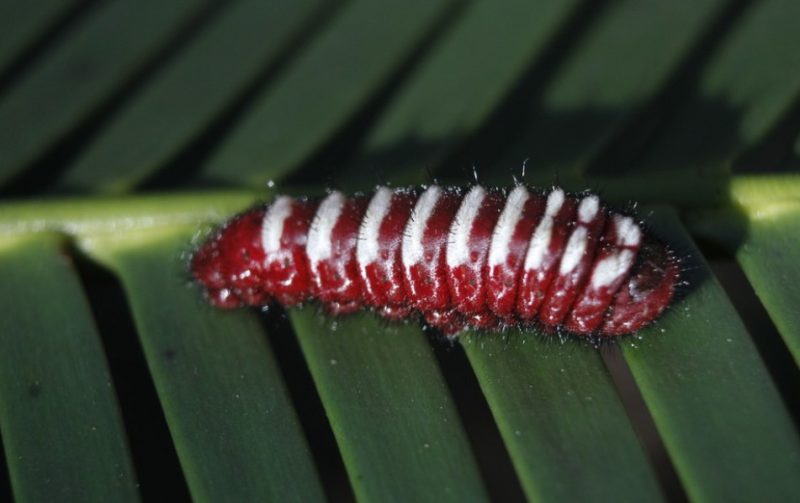
The Superb Cycadian Caterpillar (Eumaeus childrenae) thrives in warm tropical climates, specifically in Ceratozamia Mexicana. Its distinctive appearance features a predominantly red body with emerald-red coloration and black undertones. White dorsal bands extend from head to rear.
This aposematic coloring signals toxicity to predators, often deterring them and ensuring the caterpillar’s safety from predation.
Megalopyge lanata
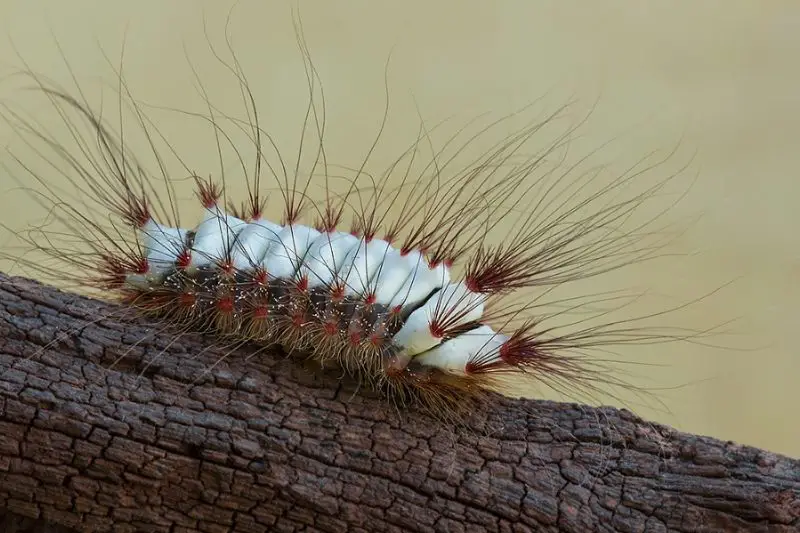
The Megalopyge lanata caterpillar is known for its multicolored and unusual appearance. Its upper side is bright, contrasting with a dark gray lower side dotted with tiny white spots. Featuring a white dorsal stripe and heavily segmented body, it sports long hairs, some of which are red-brown at the base, adding to its distinctiveness among hairy caterpillars.
Norape virgo
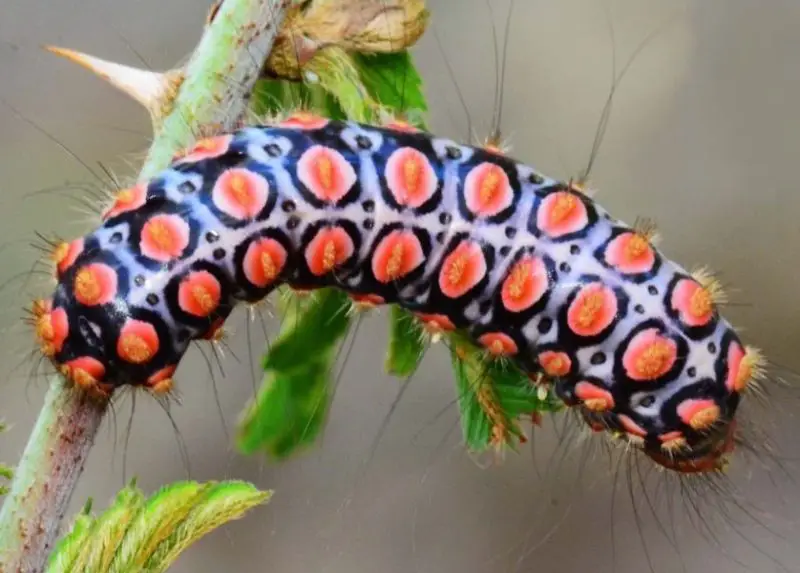
Norape virgo caterpillars exhibit a charming transformation through various color stages. Initially green with black dots, they progress to yellow-green with yellow dots outlined in black. In their final instar, they turn black with red spots, alongside distinctive white stripes and sections on their backs, completing their striking appearance.
Shag Carpet Caterpillar
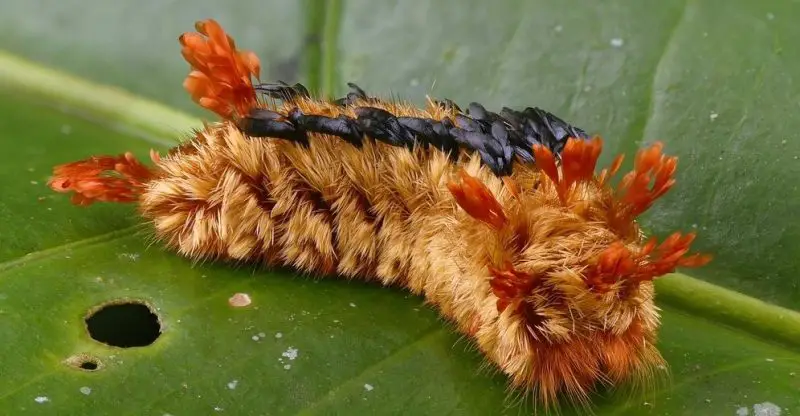
The Shag Carpet Caterpillar (Prothysana felderi), found in Central and South America, is known for its fuzzy, feathery appearance. It boasts long hairs and feather-like formations on its dorsal side, with white tubercles backed by black hairs along its sides.
Its ventral side is strikingly red, exhibiting a metallic hue, making it easily noticeable on the green leaves of outdoor and nursery plants it feeds upon.
Daring Owl-Butterfly Caterpillar
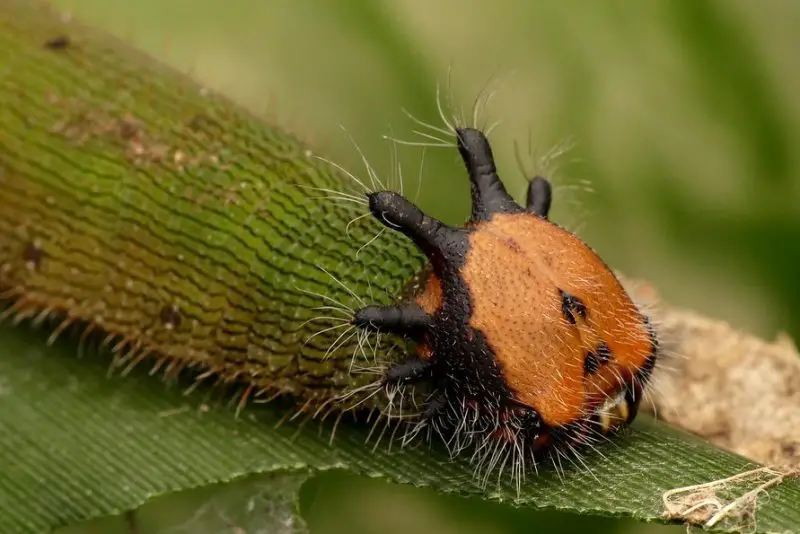
The Daring Owl-Butterfly Caterpillar (Dynastor darius) is distinguished by its unusual shape and coloration. It features a golden-brown dorsal color, black legs, and tubercles resembling legs. Initially resembling spiders, it elongates from round to cylindrical as it matures, with a black head and green body adorned with long brown and black cerci.
Its mimicry includes transforming into a brown pupa that resembles dead leaves.
Spotted Apatelodes Moth Caterpillar
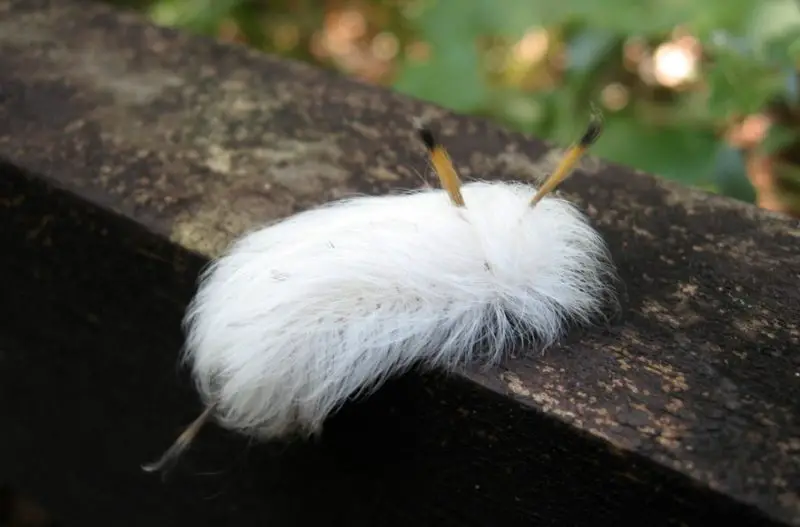
The Spotted Apatelodes Moth Caterpillar (Apatelodes torrefacta), found in Eastern US oak woodlands and ash leaves, exhibits either white or yellow coloring. The white morph features white hair, while the yellow-green morph is covered in long hairs, sometimes revealing its white body with black stripes. Brown tufts add further adornment to its distinctive appearance.
Monarch Caterpillar
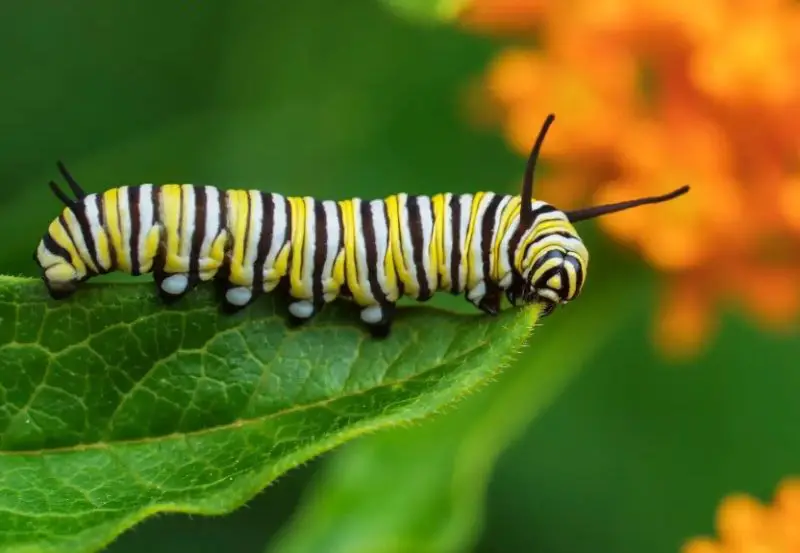
The Monarch Caterpillar (Danaus plexippus), known for its association with the beautiful Monarch butterfly, displays a colorful body with alternating black, yellow, and white bands. These repeating transverse bands are distinctive, making them easily identifiable. Monarchs travel long distances to find suitable habitats for laying eggs, contributing to their widespread presence in North America.
Zebra Longwing Caterpillar
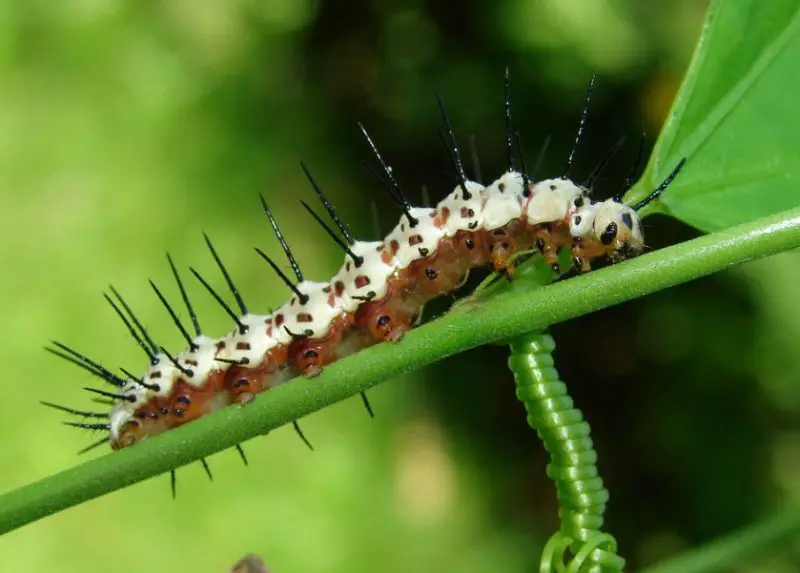
The Zebra Longwing Caterpillar (Heliconius charithonia) mirrors its butterfly counterpart with distinctive contrasting colors. Starting from yellow eggs, it progresses through a white stage with black dots and long, thin black spines. Alternating black and yellow colors provide camouflage on passionflower host plants, aiding in protection from predators throughout their lifecycle.
Pipevine Swallowtail Caterpillar
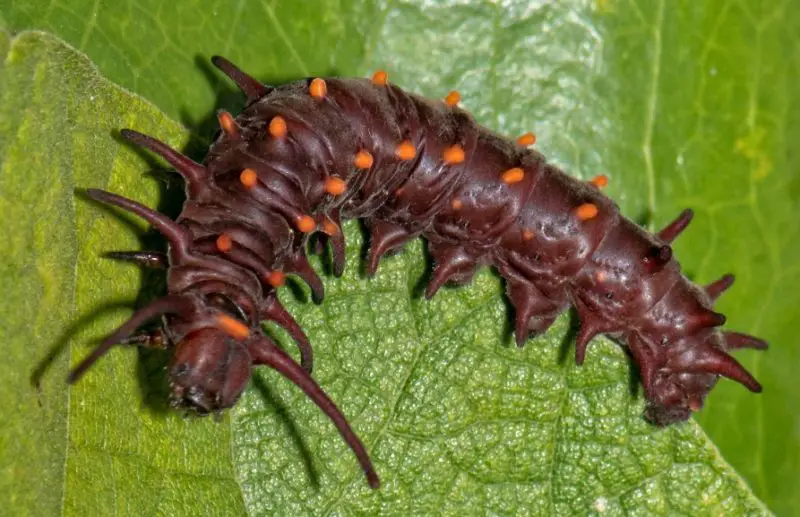
The Pipevine Swallowtail Caterpillar (Battus philenor) starts as a dark orange color in its early instars, growing up to 2 inches in size and changing hues through its development. It darkens to brown or red-brown with orange tubercles in later stages. Its final instar features dark brown coloring with short, rounded orange tubercles before transforming into a pupa resembling a rolled leaf, either green or brown.
Spicebush Swallowtail Caterpillar
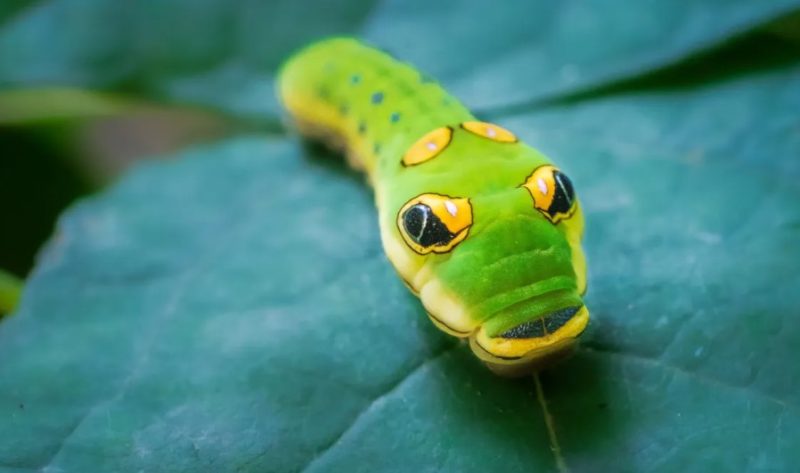
The Spicebush Swallowtail Caterpillar (Papilio troilus) undergoes two mimicry stages during its development. Initially brown, it mimics bird droppings and has a larger head with two large eyespots. As it grows, it turns green with yellow ventral coloring and black eyespots, resembling a small snake. Tiny blue dots appear across its dorsum in the final instar. Found on spicebush, it transitions from brown to green through an intermediary yellow stage.
Isabella Tiger Moth Caterpillar
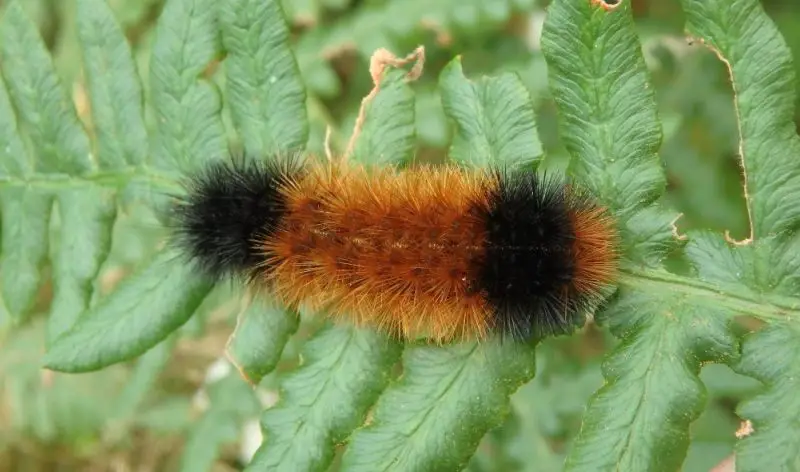
The Isabella Tiger Moth Caterpillar (Pyrrharctia isabella) is easily identifiable by its bicolored, hairy body, featuring a brown central section and black ends. Covered in short, spiny hairs, it should not be handled with bare hands as it can cause dermatitis. These hairs are not venomous, as there are no venom glands connected to them. Therefore, while it may cause skin irritation, no serious injury can result from handling this caterpillar with bare hands.
Virginian Tiger Moth Caterpillar
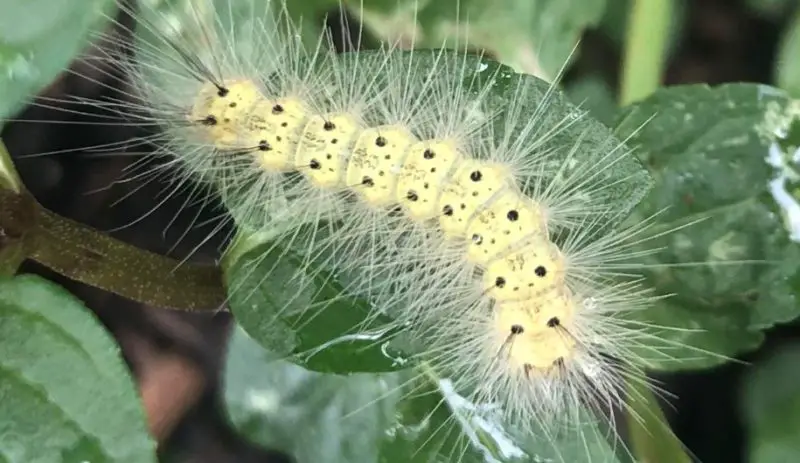
The Virginian Tiger Moth Caterpillar (Spilosoma virginica) is a common and beautiful species in North America. Known for its uniform yellow color, it maintains this hue from early to late instars. Covered in long, dense yellow hairs, it often inhabits low-growing plants like grass, making it a frequent sight for hikers and campers. Upon reaching adulthood, it transforms into the white Virginian Tiger Moth.
Cecropia Moth Caterpillar
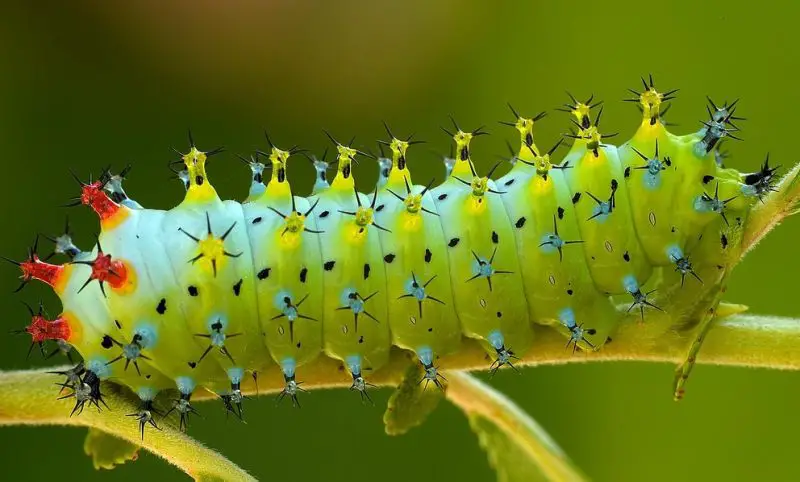
The Cecropia Moth Caterpillar (Hyalophora cecropia) features unique coloring that brightens as it grows. Initially black with tubercles, it transitions through yellow and green phases in its second and third instars. The final instar displays a pale green body with blue or yellow tubercles and blue undertones, creating a distinct and beautiful appearance.
Regal Moth Caterpillar
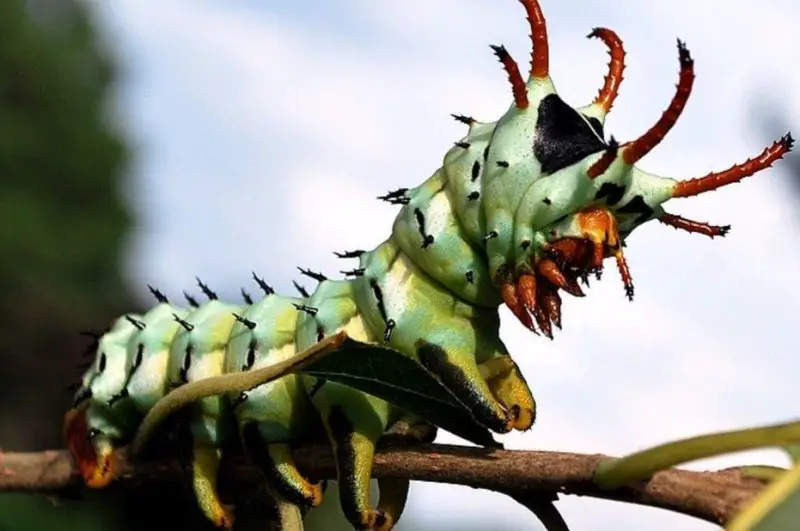
The Regal Moth Caterpillar (Citheronia regalis) inhabits Southern US woodlands and changes appearance as it grows. Initially vivid green with yellow and black bands and prolegs, it darkens to green-gray or green-blue with short black spines. In its final instars, the caterpillar has four brown and black horns on its head and rear horns that split into two sets.
Puss Caterpillar
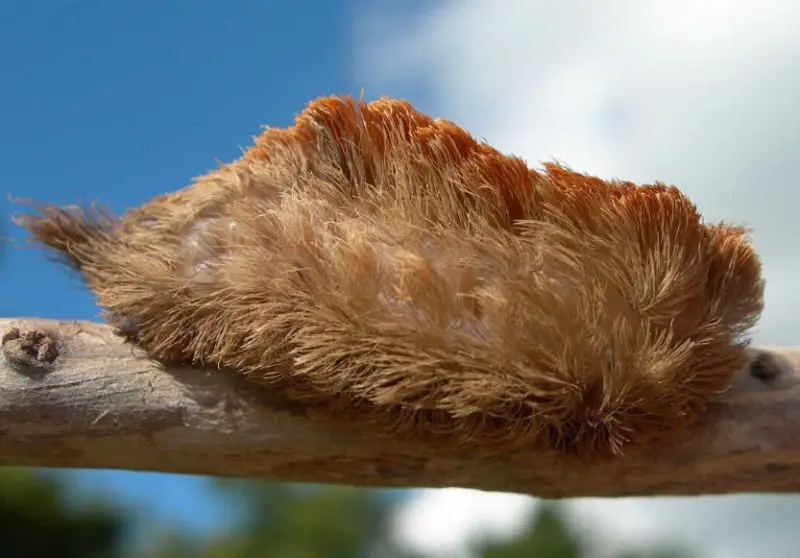
The Puss Caterpillar (Megalopyge opercularis), also known as the Asp caterpillar, has a distinctively hairy appearance. Its body is covered in hair-like spines that are hollow and venomous. Contact with these spines can cause severe skin reactions, such as rashes and dermatitis. This caterpillar is brown-gray, camouflaging itself on oak and elm tree bark while feeding on their leaves.
Evergreen Bagworm
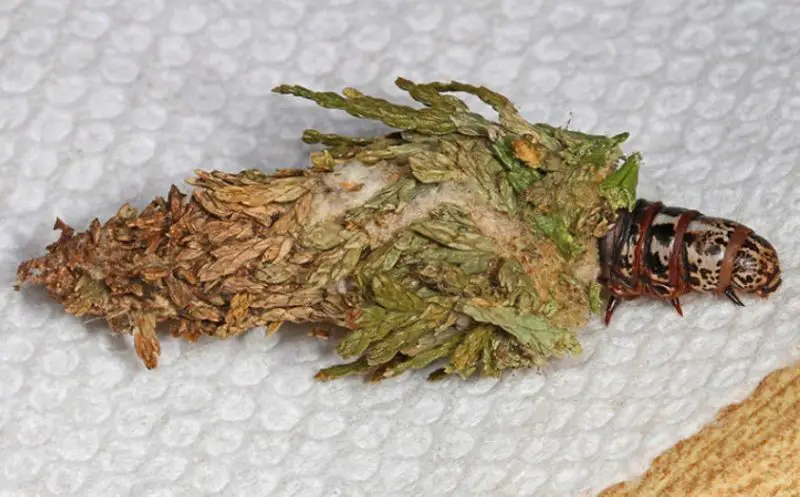
The Evergreen Bagworm (Thyridopteryx ephemeraeformis) is one of the smallest caterpillars, measuring just 2 mm in its first instar. It builds a protective bag-like case from vegetation fibers. The caterpillar is brown throughout most instars, turning black before pupation. Common hosts include juniper, red oak, and willow.
Saddleback Caterpillar
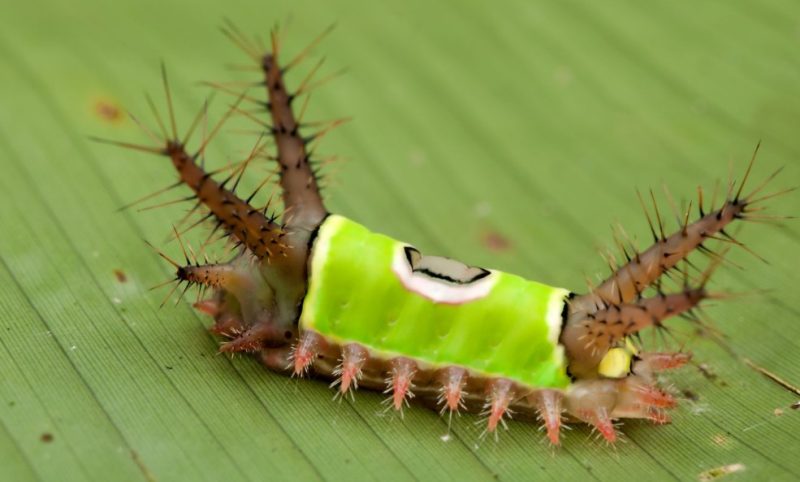
The Saddleback Caterpillar (Acharia stimulea) is named for its green saddle-like marking in the middle of its body, with brown ends covered in short spines. This species lacks prolegs and moves like a slug using mucus. Found in North America, it commonly inhabits basswood, chestnut, and false buckthorn.
Showy Emerald Caterpillar
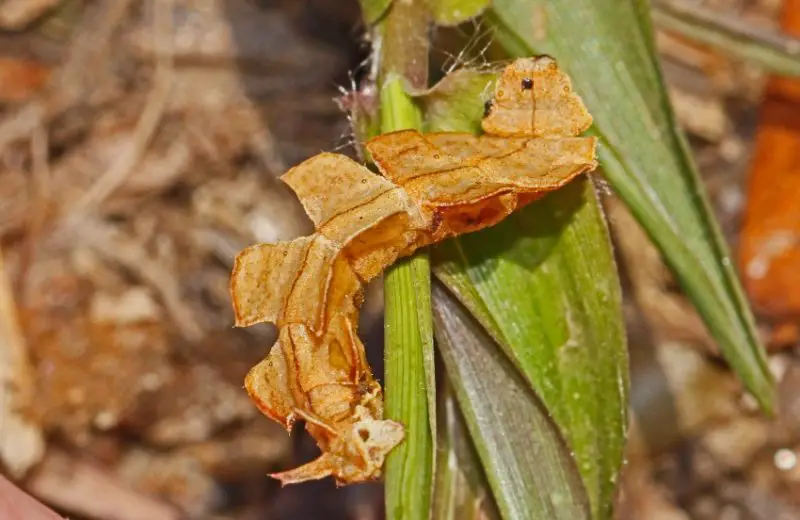
The Showy Emerald Caterpillar (Dichorda iridaria) is an unusual species found in Eastern and coastal US states, and parts of Southeastern Canada. It employs mimicry with its light brown color, adorned with tiny brown spots and a dark brown lateral stripe. Its irregular shape, marked by wide, square projections, resembles dead oak leaves, contributing to its camouflage.
Stinging Rose Caterpillar
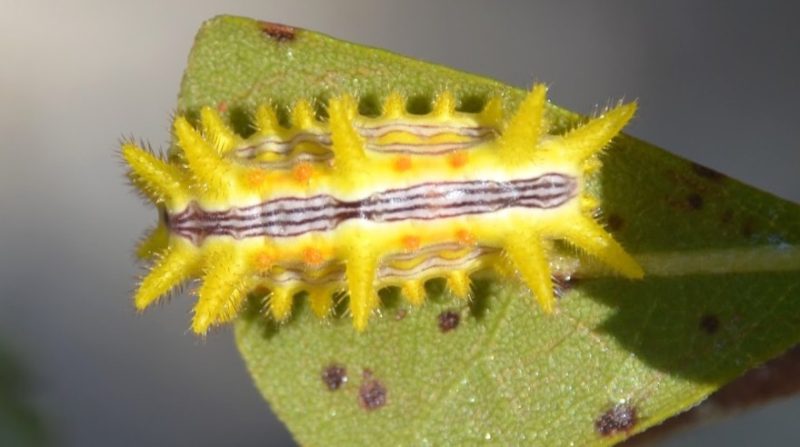
The Stinging Rose Caterpillar, found in the Eastern US states, boasts a distinctive appearance. Its multicolored body, typically orange or green, is adorned with thick spines and black-and-white stripes along its back.
Often seen on apple and hickory trees, this caterpillar transforms as it matures, developing smaller, hair-like spines that can cause allergic reactions upon contact. It’s admired for its beauty but is best observed from a safe distance.
Paddle Caterpillar
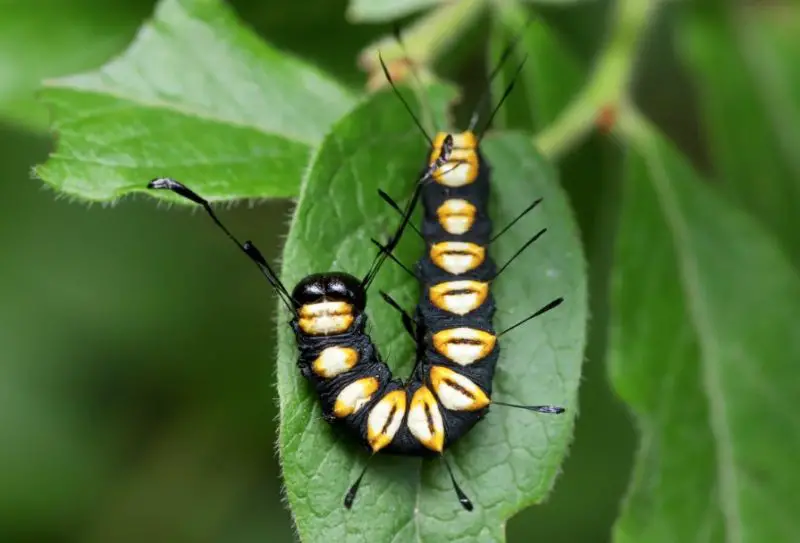
The Paddle Caterpillar (Acronicta funeralis), found across North America, is renowned for its striking appearance. As it matures, it adopts a predominantly black body with distinctive yellow ring-like segments along its back. Sporting yellow eyespots from head to anal plate, this caterpillar exhibits a coloration that suggests toxicity to potential predators.
It feeds primarily on leaves from apple, hickory, maple, and oak trees, blending in among other leaf-munching caterpillars.
Purple-crested Slug
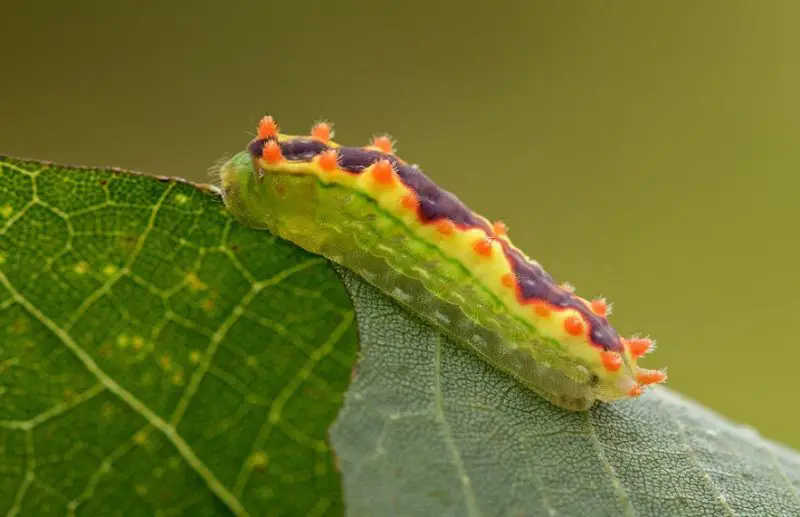
The Purple-crested Slug caterpillar (Adoneta spinuloides) inhabits the Eastern and Southeastern US, favoring linden and beech trees for leaf consumption. Its body is predominantly green, with a distinctive twist: the lower half is green, while the dorsal side displays vibrant yellow and red-brown hues.
Small orange spines resembling prolegs add to its unique appearance, giving it an almost upside-down appearance in comparison to typical caterpillars.
Spun Glass Slug
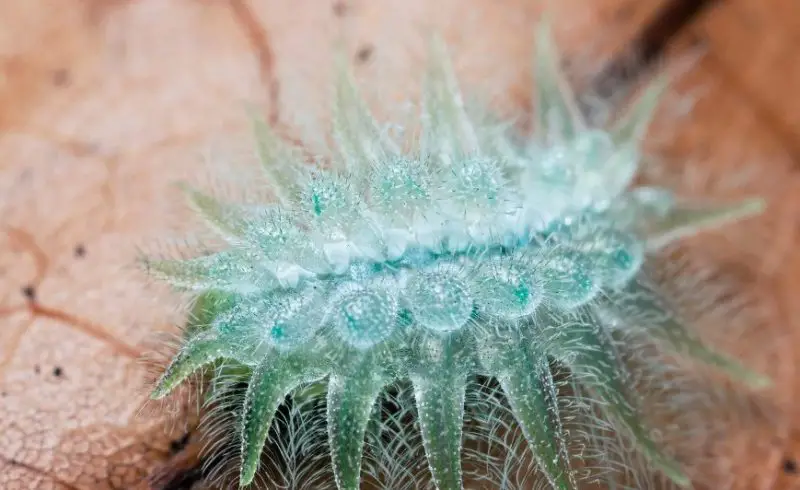
The Spun Glass Slug (Isochaetes beutenmuelleri) is a distinctive caterpillar found on oak and beech trees. It sports large spine-like formations covered in smaller, sharp spines. Its uniform green coloration serves as effective camouflage against predators.
As it matures, it retains its green hue, with lighter shades on its spines and a darker tone on its body. Touching its poisonous spines can cause skin irritation, rashes, and red patches.
Heiligbrodt’s Mesquite Moth Caterpillar
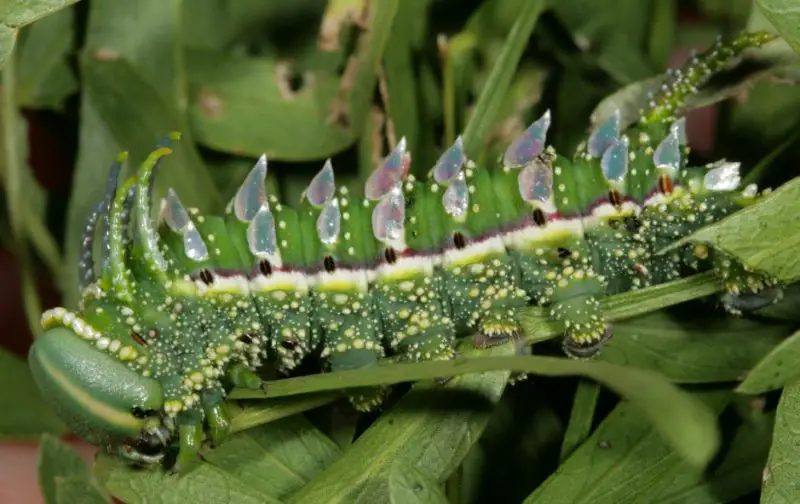
Heiligbrodt’s Mesquite Moth Caterpillar (Syssphinx heiligbrodti) is among the rarest in the US, notable for its peculiar features. It boasts six horn-like tubercles behind its head, with four black and two yellow spines. Small white projections adorn its body in two rows. Initially green, it develops black, white, and red stripes as it matures.
Found exclusively in Southern Texas and Mexico, this caterpillar inhabits a limited habitat.
Black-etched Prominent Moth Caterpillar
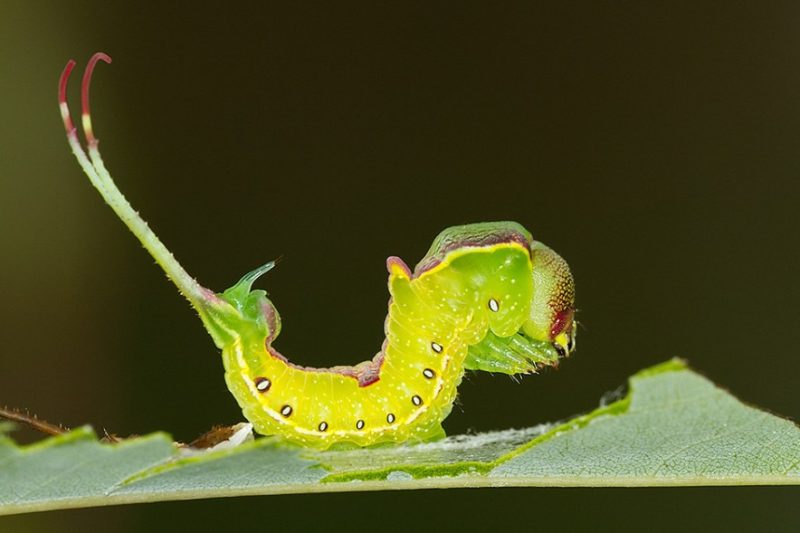
The Black-etched Prominent Moth Caterpillar (Tecmessa scitiscripta) favors poplar trees as its primary host. It displays a distinctive green-and-white coloration, with green on the lower body and ventral side, and white on its dorsal side. Red stripes adorn its wide dorsal area, while small eyespots line its sides as it matures.
Among the smallest caterpillars in North America, it features long cerci resembling tails and prominent prolegs.
Gaudy Sphinx Caterpillar
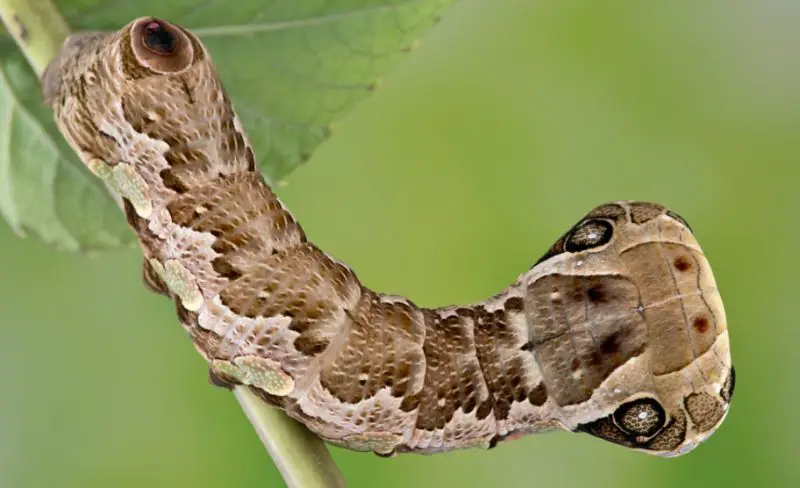
The Gaudy Sphinx Caterpillar (Eumorpha labruscae) stands out as one of the most unusual species across North and South America. Resembling a small snake, its brown-to-gray coloration aids in mimicking a potentially dangerous appearance. Gray lateral stripes and a broad brown dorsal section are distinctive features.
With a wide, gray-brown head adorned with two large eyespots and a fake nostril, this caterpillar is unlike any other found in Eastern North America.
Jewel Caterpillar

The Jewel Caterpillar (Acraga coa) thrives in multiple Central American countries, flaunting a jewel-like, nearly transparent appearance. It transitions through color phases from white to orange and green and is adorned with small, slightly transparent, rounded tubercles. In later stages, it showcases yellow, orange, and green combinations after molting.
It’s notably found on Terminalia trees and coffee plants, showcasing its unique host preferences.

